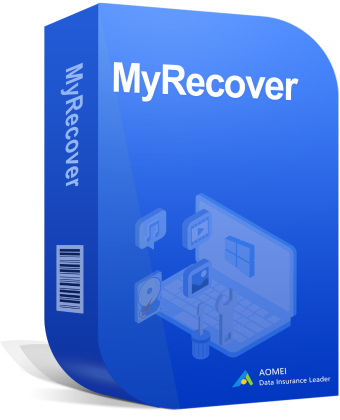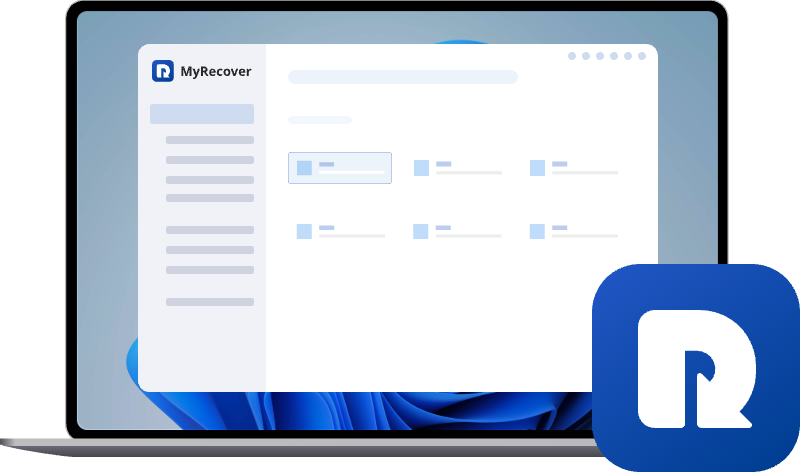Top 7 Solutions to Restore Deleted Folder on Windows 10/11
Many users face the challenge of restoring the deleted folders on Windows 10 and 11. This guide will walk you through 7 practical and actionable solutions for Windows users to restore the lost folders. Get your lost directories back with ease!
Where Would a Deleted Folder Go?
You must have encountered such a situation: accidentally deleting a folder while managing it. This can be devastating, especially when the folder contains important work or study files. Before diving into specific recovery methods, this question is worth pondering: where do deleted folders go? Once you find the answer to this question, figuring out how to recover deleted folders will become much simpler.
☀️Delete using "Delete" key or right click > "Delete"
It usually goes to the Recycle Bin, where it’s stored temporarily. You can recover it easily unless the Recycle Bin is emptied or the folder is too large to fit in it.
☀️Delete using "Shift + Delete"
The folder bypasses the Recycle Bin and is permanently deleted. The file data remains in its original location on the disk, but the corresponding storage space is marked as "free", allowing new data to overwrite it.
- Notes:✎...
- In that case, please stop using the disk where the folder was stored to prevent the data from being overwritten.
Fortunately, Windows 10 and 11 offer several methods to restore deleted folders, whether they were removed recently or permanently deleted. This guide will walk you through all available recovery options step by step.
How to Restore Deleted Folder on Windows 10/11
This section will guide you through step-by-step processes that work to recover deleted folders, whether with backups or not, and whether you’re a pro or a complete novice. You can choose the appropriate method based on your actual situation.
Solution 1. Check the Recycle Bin
The Recycle Bin is the first place to look for a recently deleted folder once the data loss occurs. If your folder was deleted temporarily (not with "Shift + Delete"), it will be in the Recycle Bin.
Step 1. Double click the Recycle Bin icon to open it.
Step 2. Browse through the items and select the files you wish to recover.
Step 3. Right click on it and select "Restore" to return it to its original location.
Solution 2. Restore Previous Versions
If you have enabled Shadow Copy and File History, restoring previous versions will be a convenient feature to recover deleted folders.
Step 1. Open File Explorer and select the drive or folder that used to contained the deleted folder.
Step 2. Right click the drive or folder and choose "Restore previous versions" from the context menu. Then a list of previous versions of the folder will be listed.
Step 3. Select a desired version and click "Restore" to return it to its original location.
Solution 3. Restore your Files with File History
File History is a Windows built-in backup utility which automatically save copies of your personal files and folders. It allows you easily to restore them if something goes wrong. If you have enabled File History on Windows 10 and 11, and add the specific folder to File History backup plan, you can restore it from the backups.
Step 1. Type "Restore your files with File History" in the Start menu and open it.
Step 2. Navigate to the folder (or the folder containing the deleted one) in the backup made before it was lost.
Step 3. Click the green "Restore" to recover it.
Solution 4. Backup and Restore (Windows 7)
Backup and Restore is another built-in backup utility designed to back up your files and create system images, serving as a safeguard against data loss or system crashes. It enables you to generate copies of your files and settings, which can then be restored whenever the need arises.
Step 1. Open "backup settings" and click "Go to Backup and Restore (Windows 7).
Step 2. Choose "Select another backup to restore files from".
Step 3. Choose a created backup containing the deleted folder and click "Next".
Step 4. Click "Browse for folders" to select folder to restore.
Step 5. Select a safe location to save the recovered files and click "Restore" to begin the process.
When the process is completed, the message "Your files have been restored" will pop out. You can check them by clicking "View restored files".
Solution 5. Restore from Cloud Backup
In addition to Windows' built-in backup tools, cloud backup services like OneDrive, Google Drive, and Dropbox can also back up your files and allow restoration from those backups. If your files were synced to cloud storage services, you might be able to restore them there. Take OneDrive as an example here:
Step 1. Sign in to OneDrive with your account.
Step 2. Select the "Recycle Bin" section in the left sidebar.
Step 3. Locate to the folder you wish to recover and click "Restore".
- ★Tips:
- Typically, OneDrive's Recycle Bin only retains deleted files for 30 days. It’s crucial to act as soon as possible after discovering the file loss.
Solution 6. Run Windows File Recovery Command
If you're a command-line enthusiast or a professional, Windows File Recovery can do an excellent job of helping you recover permanently deleted folder on Windows 10 and 11 without the need for a backup. Follow these steps to recover deleted folder using Windows File Recovery command:
Step 1. Download and install Windows File Recovery on your computer from the official Microsoft channel.
Step 2. Type the command "Winfr H: D: /regular /n /Importantfolder" and press "Enter". Replace the drive letters "H", "D" and the folder name "Importantfolder" with your actual drive letters and folder name.
When the process is finished, you can press "y" to check the recovered files in the destination folder.
Solution 7. Recover with Professional Recovery Tool—MyRecover
If you're uncomfortable with command-line tools but still want a tool with the same functionality, MyRecover is tailor-made for you. Featuring a user-friendly GUI, MyRecover enables even computer novices to perform data recovery independently—simply by clicking icons. It scans your local hard drive for lost data and offers a chance to restore it. You can recover deleted folders on Windows in just four steps:

- Supports 500+ Data Loss Scenarios: whether it’s accidental deletion, formatting, system crash, virus attack, or partition loss, MyRecover efficiently recovers your files.
- Fast Recovery with High Accuracy: Utilizing deep scan technology, it quickly locates lost files and greatly improves recovery success rates.
- File Preview Before Recovery: Allows you to preview files before restoring, so you can confirm you’re recovering exactly what you need.
- Safe and Risk-Free Recovery: The recovery process won’t cause any further damage to your existing data, ensuring data security.
Step 1. Download and install MyRecover on your computer from secure channel.
Step 2. Select a folder or drive where the deleted folder was stored to scan for lost files. Then click "Scan".
Step 3. Choose the files you wish to recover from the recoverable lists and click "Recover".
Step 4. Select a safe location to save the recovered files.
Once the completion of the recovery, the message "Files have been recovered successfully" will pop out. You can access and check them by clicking the destination folder.
Summary
Losing a folder doesn’t always mean it’s gone forever. Whether it’s sitting in the Recycle Bin or has been permanently deleted, Windows offers multiple options to help you restore deleted folders. If you're looking for a reliable data recovery tool, MyRecover comes highly recommended.
It covers over 500 data loss scenarios, including recovering data from deleted partitions, formatted USB drives, and emptied Recycle Bins, virus attacks among others. MyRecover also offers a Professional version, which supports data recovery from unbootable systems and provides a file content preview function.


